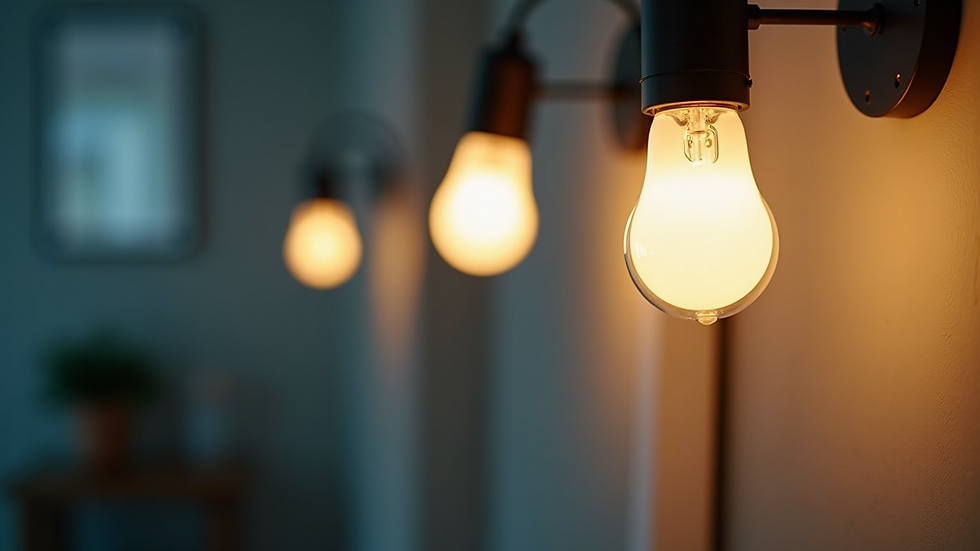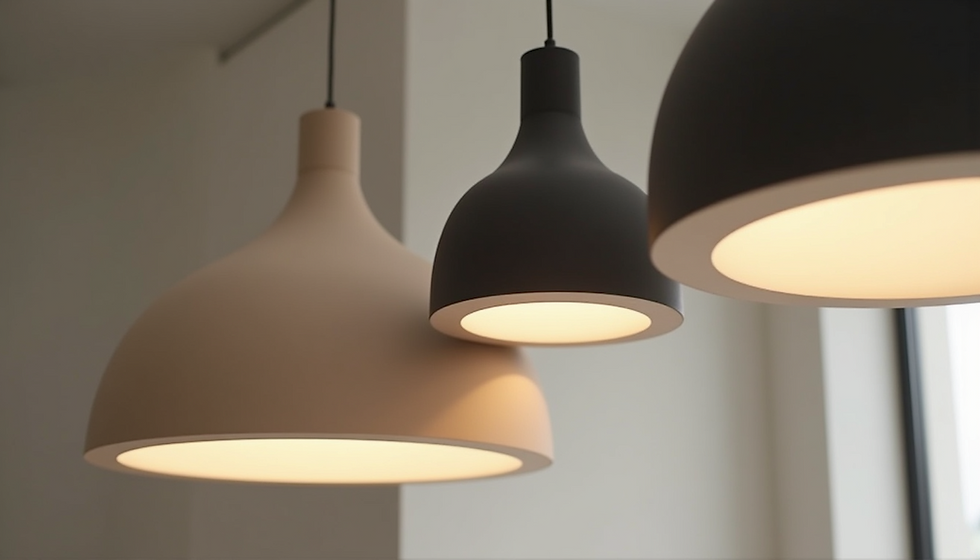How Lighting Enhances Interior Spaces in Architecture
- MOSS Objects
- Sep 15
- 4 min read
Lighting plays a crucial role in shaping the atmosphere and functionality of interior spaces. It is not just about illumination but about creating moods, highlighting architectural features, and improving the overall experience within a room. Thoughtful lighting design can transform a simple space into a captivating environment that feels welcoming, comfortable, and visually appealing.
Understanding how lighting interacts with architecture helps designers and homeowners make informed decisions that enhance both aesthetics and usability. This article explores the importance of interior lighting, its impact on architectural spaces, and practical ways to optimize lighting for various environments.
The Importance of Interior Lighting in Architectural Design
Interior lighting is more than just a necessity; it is a powerful design element that influences how people perceive and interact with a space. Proper lighting can:
Enhance spatial perception: Light can make rooms appear larger or cozier depending on its placement and intensity.
Highlight architectural details: Features like textured walls, columns, and ceilings become focal points when illuminated correctly.
Create ambiance: Different lighting temperatures and intensities evoke various moods, from calm and relaxing to energetic and vibrant.
Improve functionality: Task lighting ensures that activities such as reading, cooking, or working are performed comfortably and safely.
For example, in a living room, layered lighting combining ambient, task, and accent lights can create a versatile environment suitable for relaxation, socializing, or focused activities. In contrast, a kitchen benefits from bright, focused lighting to enhance visibility and safety.

How Interior Lighting Influences Mood and Perception
Lighting directly affects human emotions and behavior. Warm light tones tend to create a cozy and inviting atmosphere, ideal for bedrooms and lounges. Cooler light temperatures promote alertness and concentration, making them suitable for offices and study areas.
The direction and quality of light also matter. Soft, diffused lighting reduces harsh shadows and glare, contributing to a comfortable environment. Conversely, dramatic lighting with sharp contrasts can add excitement and visual interest, often used in galleries or retail spaces.
Natural light integration is another critical aspect. Maximizing daylight through windows and skylights not only reduces energy consumption but also enhances well-being by connecting occupants with the outdoors.
To optimize mood and perception:
Use dimmers to adjust light intensity according to time of day and activity.
Combine different light sources to create layers and depth.
Choose light fixtures that complement the architectural style and interior décor.
What are the different types of architectural lighting?
Architectural lighting can be categorized into several types, each serving a specific purpose:
Ambient Lighting
This is the general illumination that provides overall visibility in a space. It is usually achieved through ceiling-mounted fixtures, chandeliers, or recessed lights.
Task Lighting
Focused lighting designed to illuminate specific areas where activities occur, such as reading lamps, under-cabinet kitchen lights, or desk lamps.
Accent Lighting
Used to highlight architectural features, artwork, or decorative elements. Spotlights, track lights, and wall-mounted fixtures are common choices.
Decorative Lighting
These fixtures serve both functional and aesthetic purposes, often becoming a design statement themselves. Examples include pendant lights and sculptural lamps.
Natural Lighting
Daylight that enters through windows, skylights, or glass doors, playing a vital role in energy efficiency and occupant comfort.
Understanding these types helps in creating a balanced lighting scheme that enhances both form and function.

Practical Tips for Enhancing Interior Spaces with Lighting
To make the most of lighting in architectural interiors, consider the following recommendations:
Layer your lighting: Combine ambient, task, and accent lighting to add depth and flexibility.
Use adjustable fixtures: Dimmers and movable spotlights allow customization based on needs and moods.
Select appropriate color temperatures: Warm white (2700K-3000K) for relaxing spaces, cool white (3500K-4100K) for work areas.
Incorporate smart lighting controls: Automated systems can adjust lighting based on time, occupancy, or natural light levels.
Highlight textures and materials: Use side lighting or grazing techniques to emphasize surfaces like brick, wood, or stone.
Consider energy efficiency: LED lights offer long life and low energy consumption without compromising quality.
For those interested in sophisticated solutions, exploring interior architectural lighting options can provide innovative designs that blend functionality with artistic expression.
The Role of Lighting in Sustainable Architecture
Sustainability is a growing concern in architectural design, and lighting plays a significant role in reducing environmental impact. Efficient lighting strategies include:
Maximizing natural daylight to reduce reliance on artificial lighting.
Using LED technology for lower energy consumption.
Implementing sensors and timers to avoid unnecessary lighting.
Choosing fixtures made from sustainable or recyclable materials.
By integrating these practices, architects and designers contribute to greener buildings that are both beautiful and responsible.

Enhancing Interior Spaces Beyond Illumination
Lighting is a dynamic tool that goes beyond mere illumination. It shapes the way we experience architecture by:
Creating focal points that guide movement and attention.
Enhancing safety by illuminating pathways and hazards.
Supporting health by regulating circadian rhythms through light quality and timing.
Adding artistic value through creative fixture designs and light patterns.
By understanding and applying these principles, interior spaces can be transformed into environments that inspire, comfort, and function seamlessly.
Lighting is an essential component of architectural design that deserves careful consideration. Whether renovating a home or designing a commercial space, investing in thoughtful lighting solutions will elevate the overall experience and value of the interior environment.



Comments